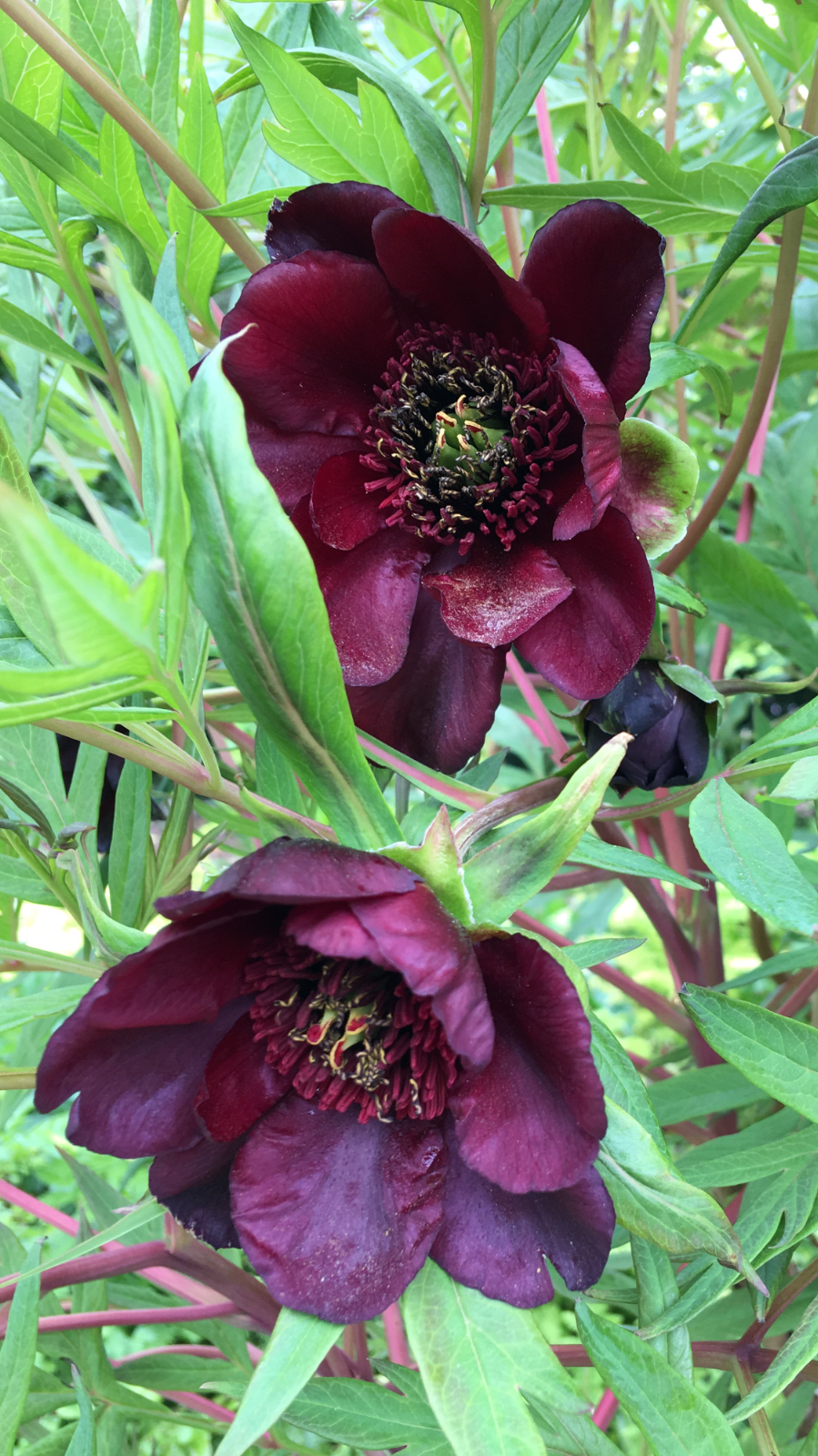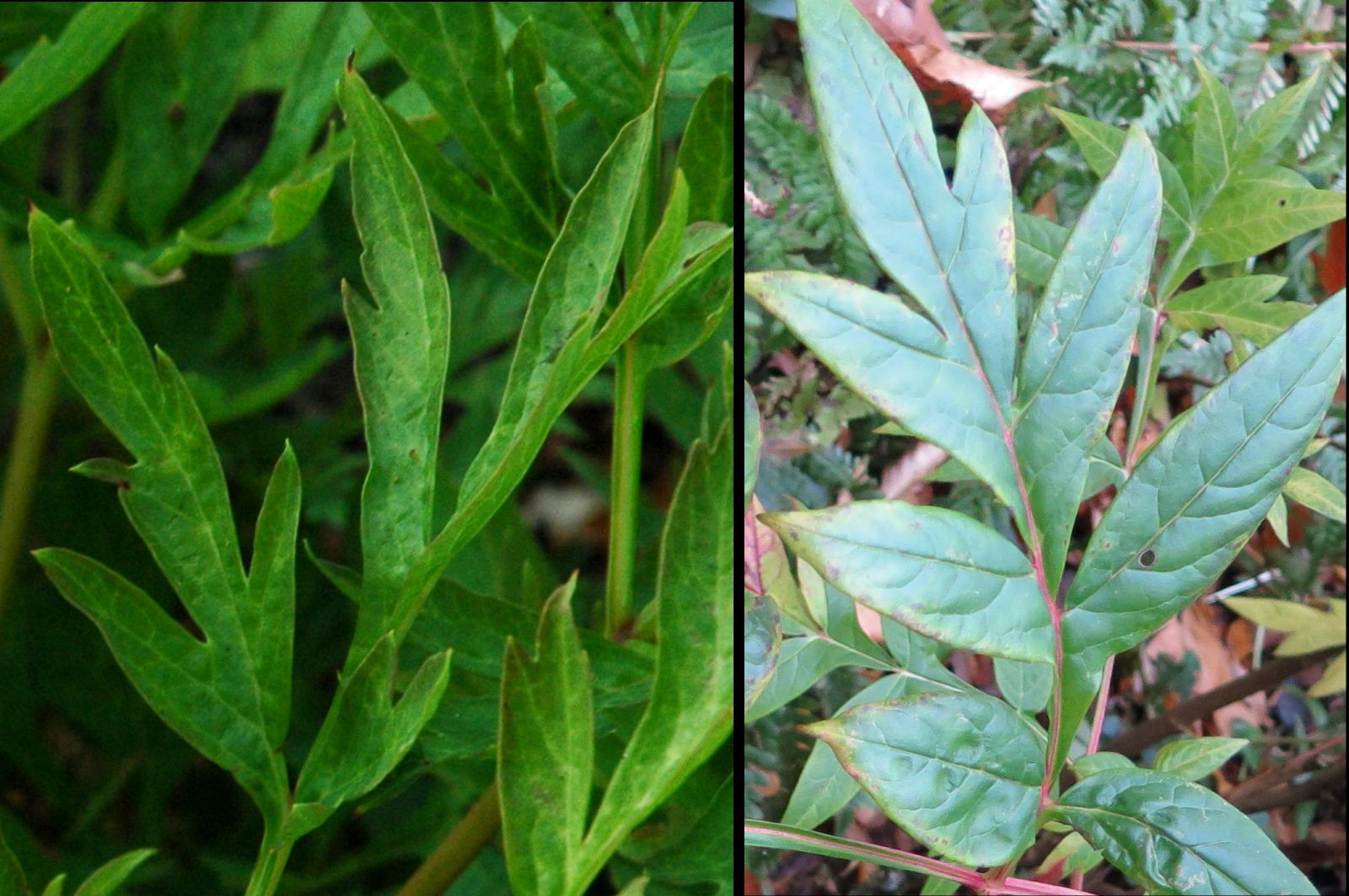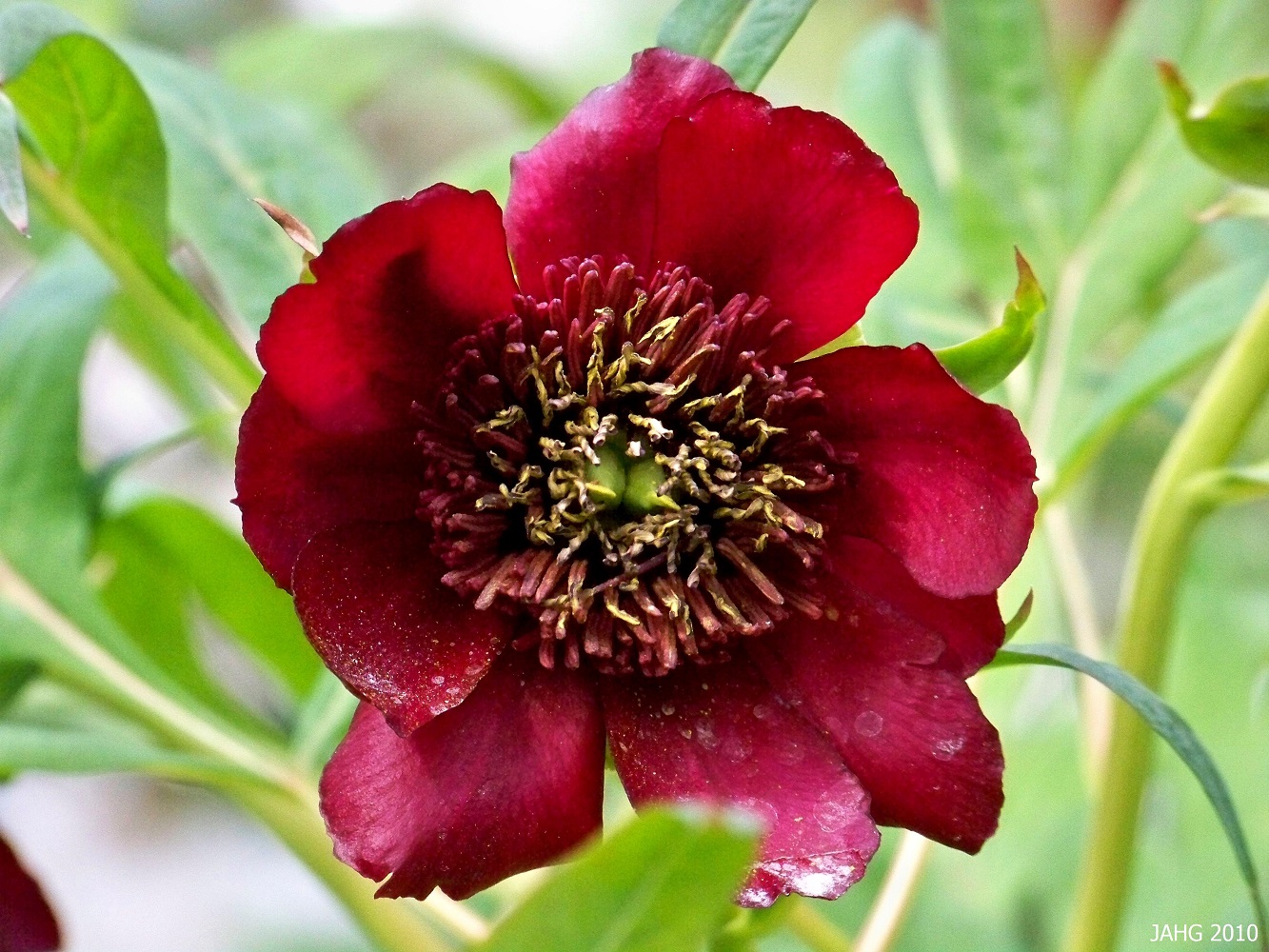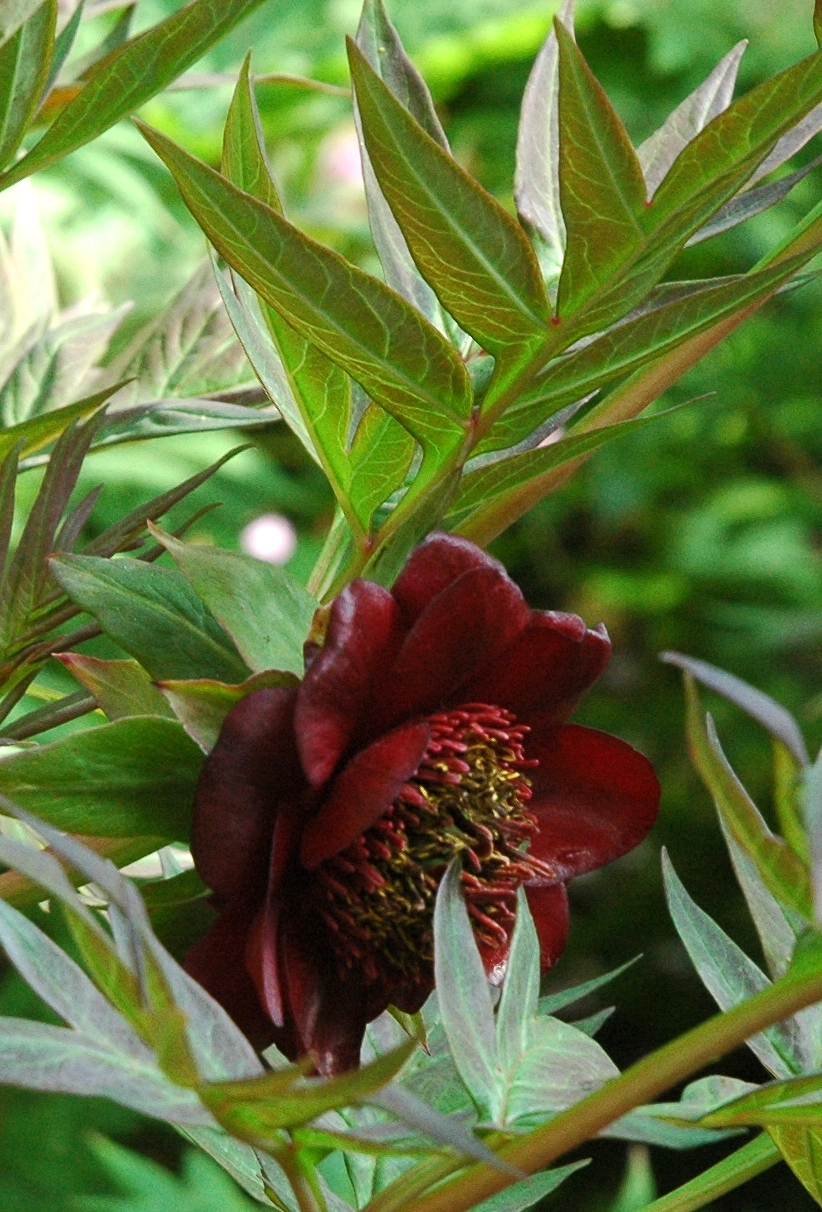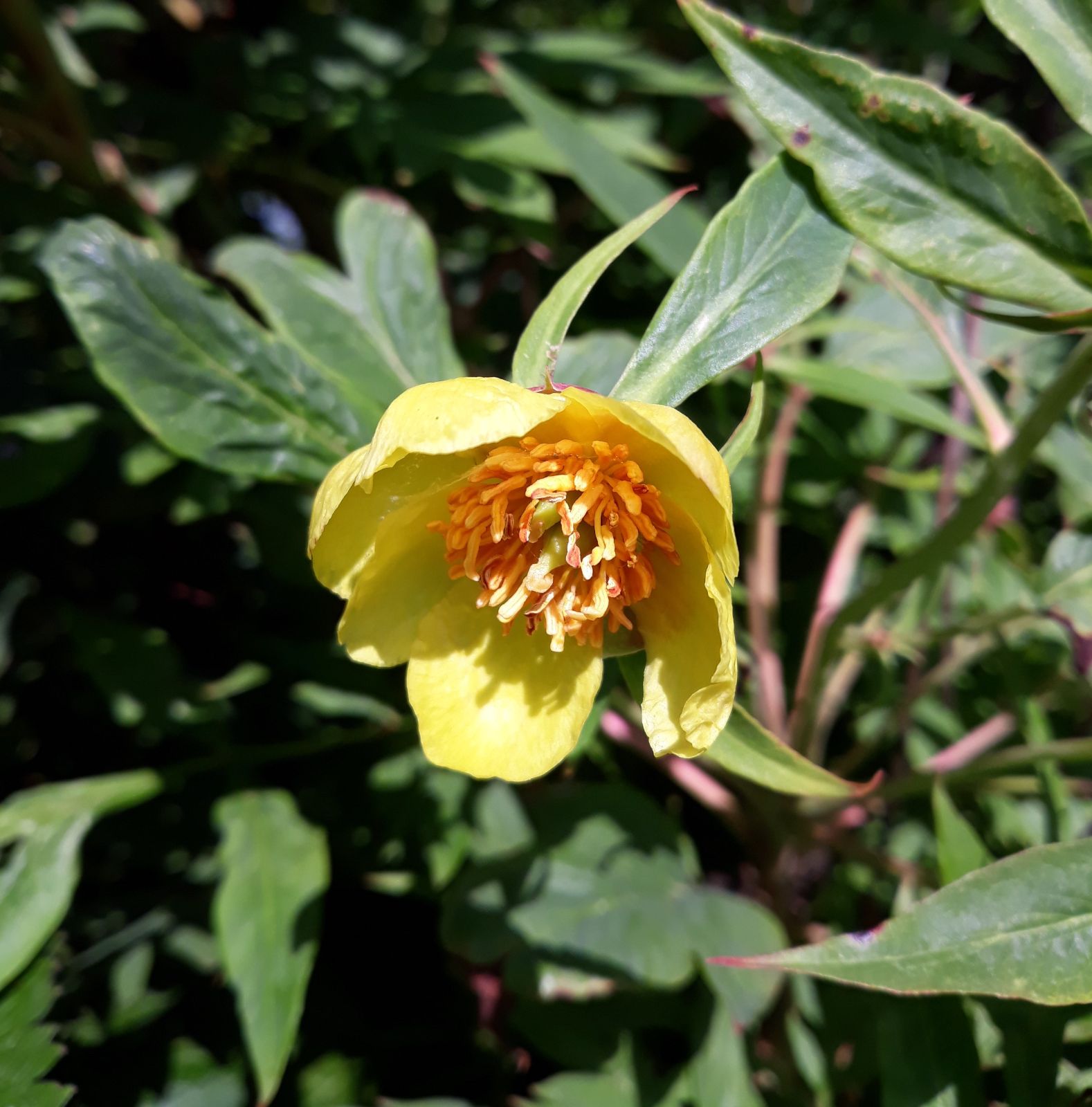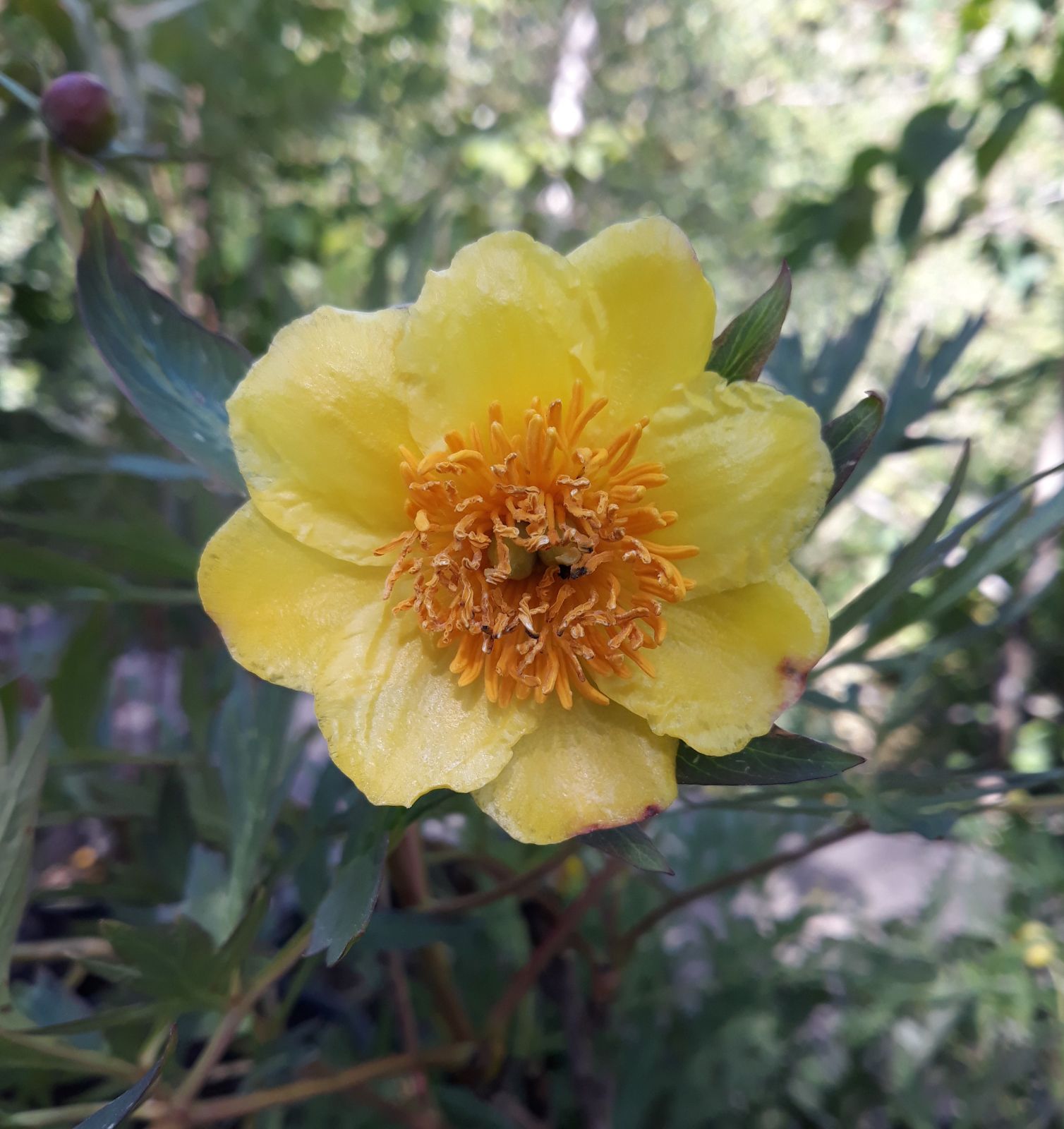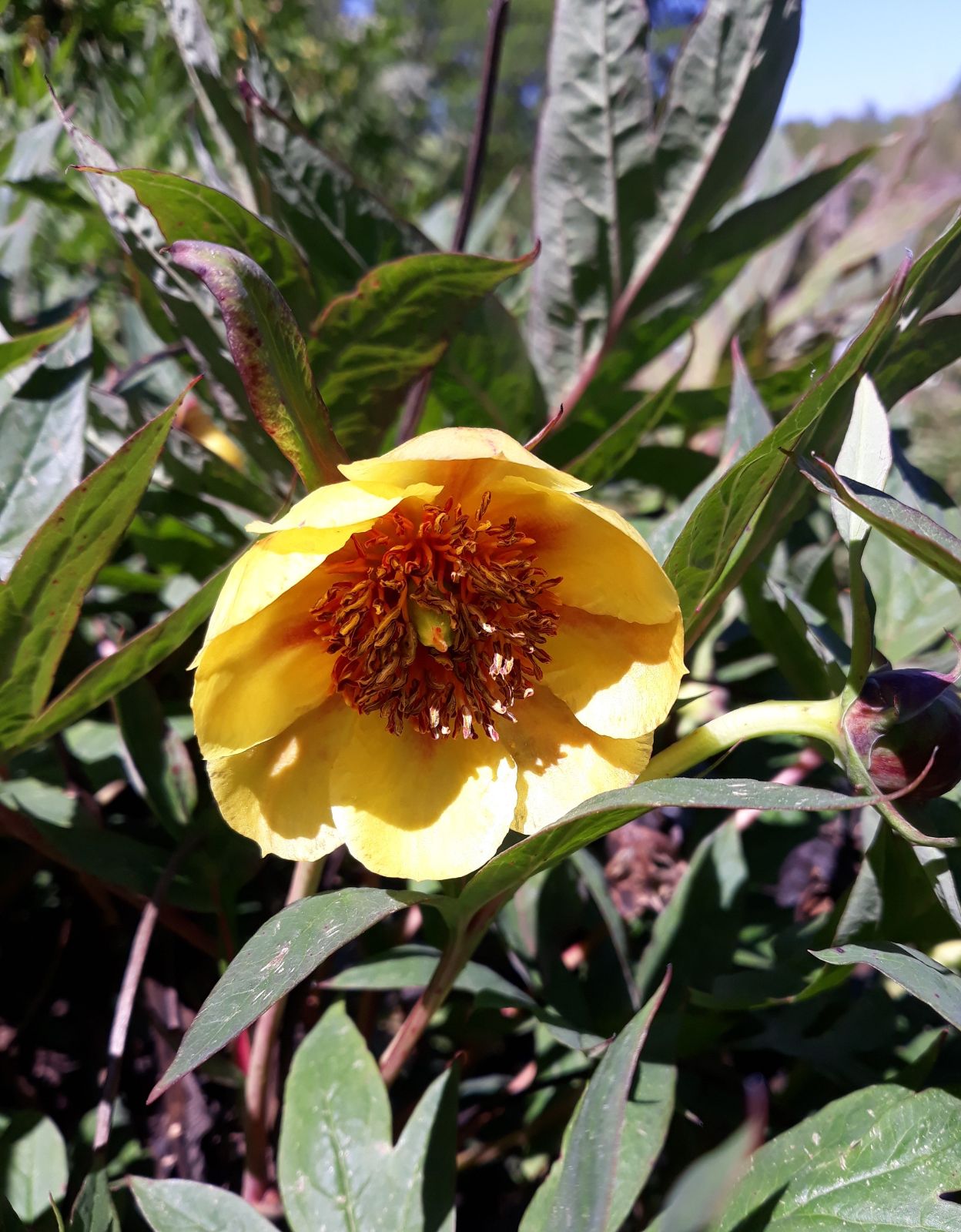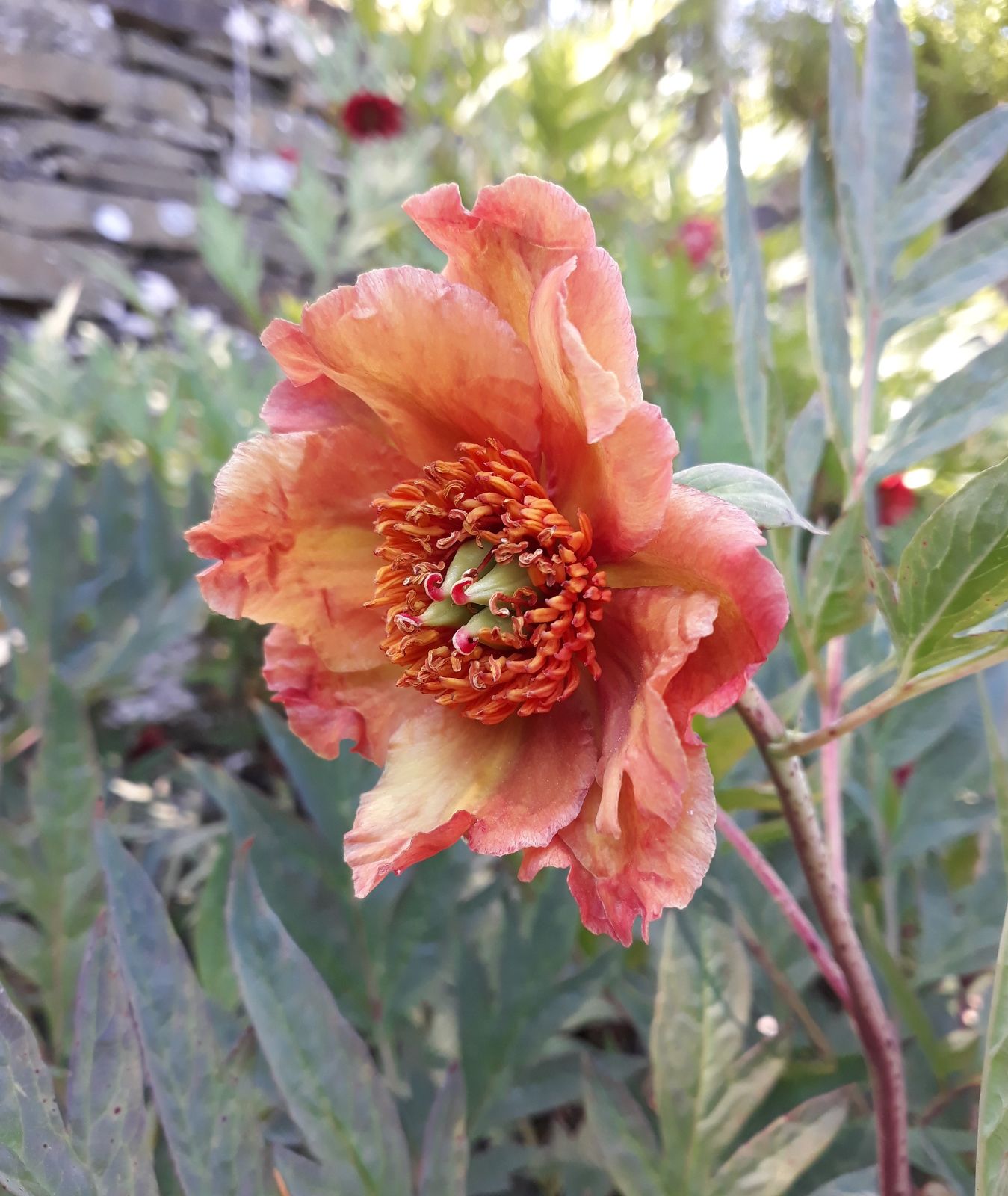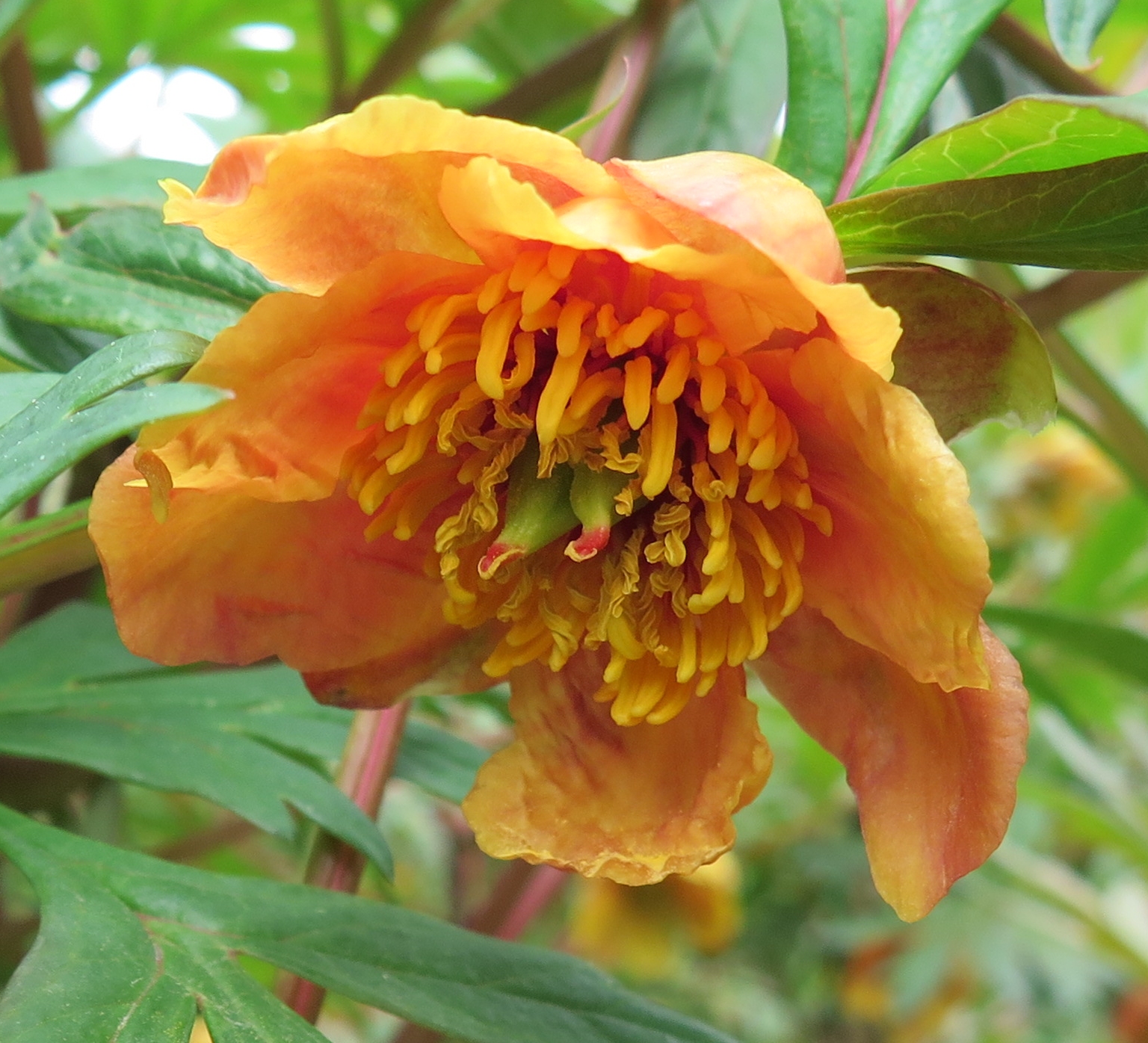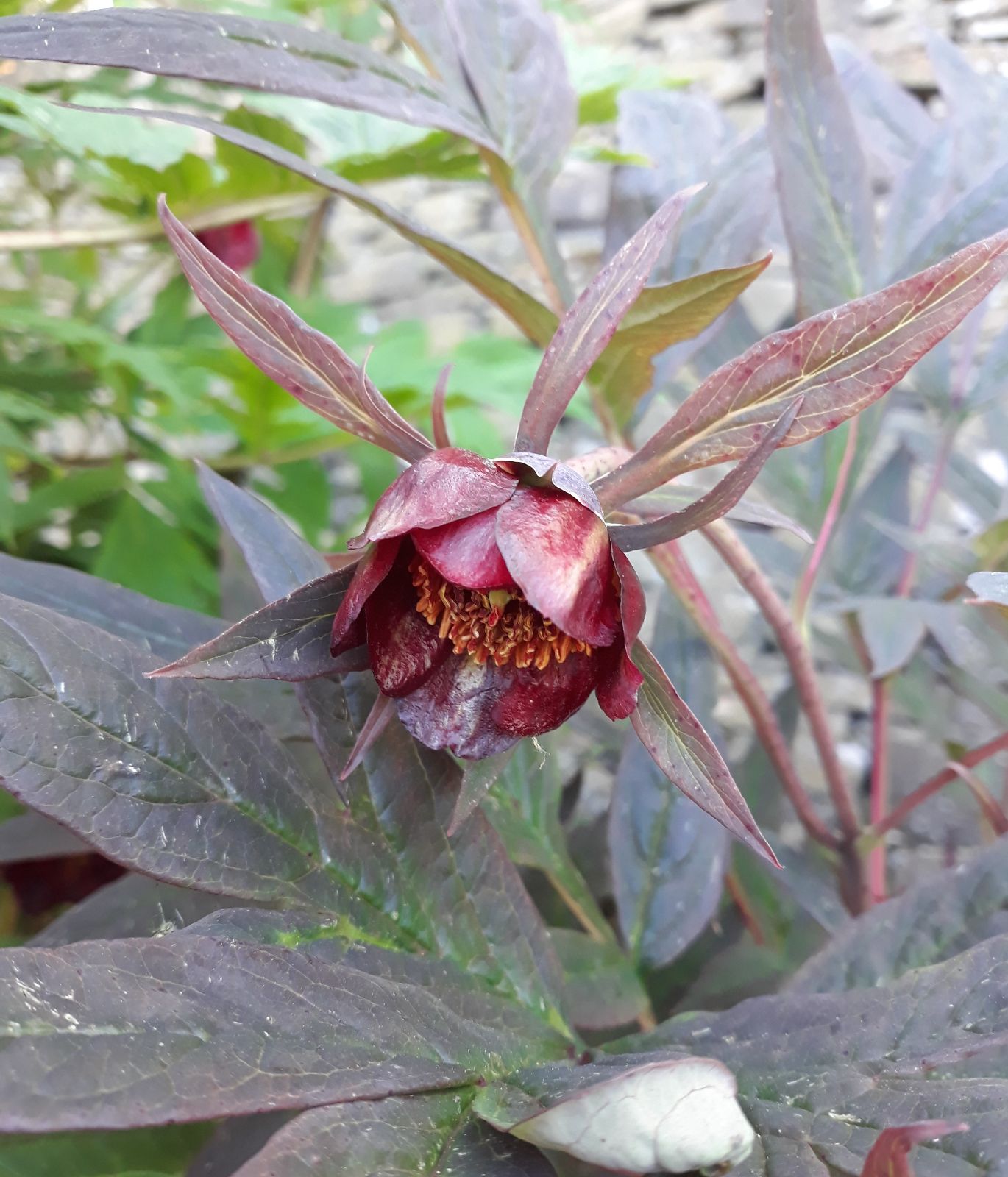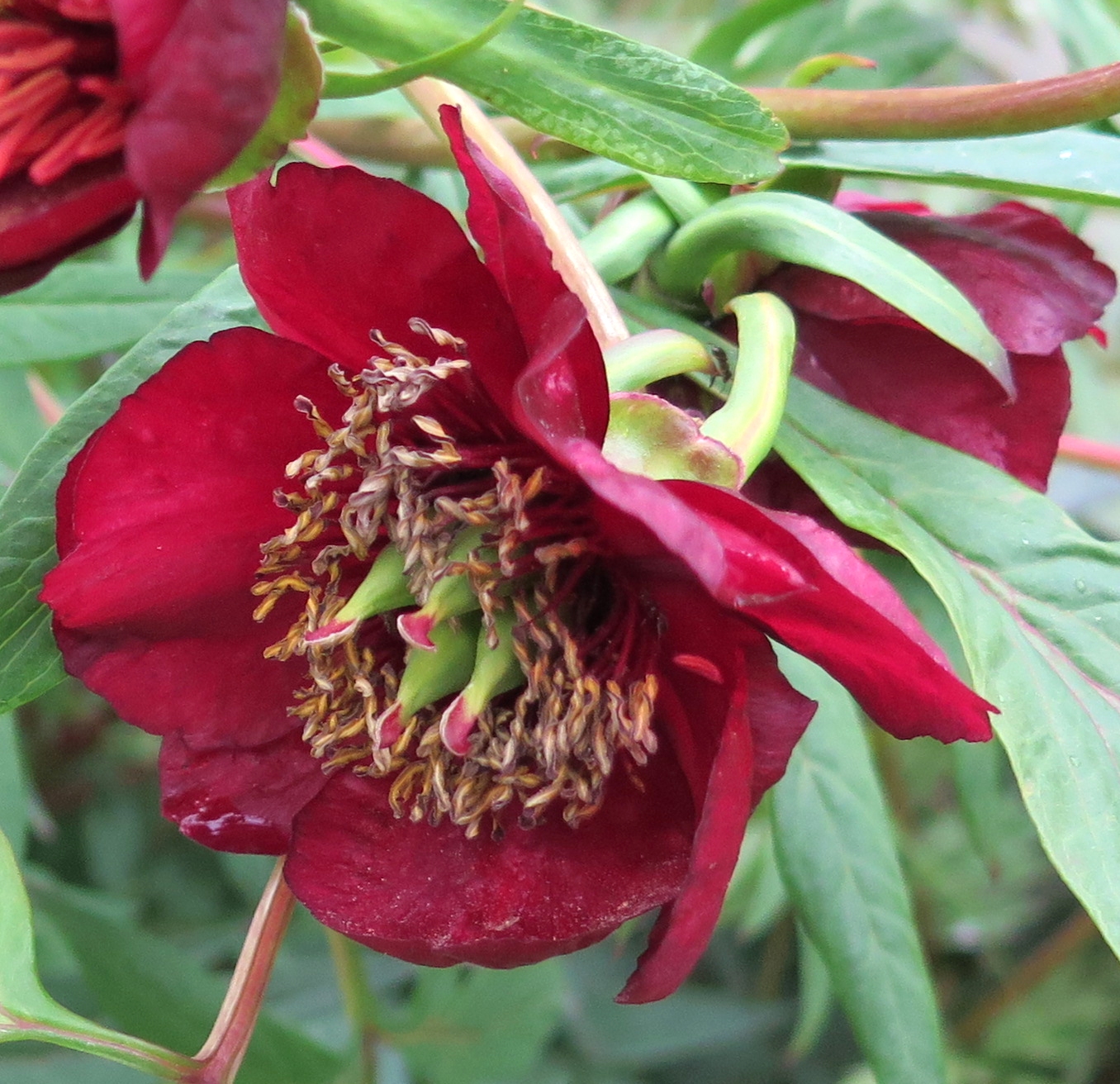Paeonia delavayi
Sponsor
Kindly sponsored by
Sponsored by David Sayers in memory of Hedvika Fraser.
Credits
Julian Sutton (2020)
Recommended citation
Sutton, J. (2020), 'Paeonia delavayi' from the website Trees and Shrubs Online (treesandshrubsonline.
Genus
Common Names
- dian mu dan
Synonyms
- Paeonia potaninii Kom.
- Paeonia trollioides Stapf ex Stern
- Paeonia delavayi var. angustiloba Rehd. & Wils.
Infraspecifics
Other taxa in genus
- Paeonia cathayana
- Paeonia Central Plains Cultivars
- Paeonia decomposita
- Paeonia Gansu Cultivars
- Paeonia Itoh Cultivars
- Paeonia Japanese Cultivars
- Paeonia jishanensis
- Paeonia × lemoinei
- Paeonia ludlowii
- Paeonia Lutea Hybrids
- Paeonia ostii
- Paeonia Other Shrubby Hybrids
- Paeonia qiui
- Paeonia rockii
- Paeonia rotundiloba
- Paeonia Southern Yangtze Cultivars
- Paeonia Southwest Cultivars
- Paeonia × suffruticosa
Shrub to 1.8 m in the wild, glabrous throughout. Roots tuberous, tubers to 8 × 2 cm. Bark grey; younger shoots green, sometimes pink, with 5–9 yellow or pink scales at the base, simple but often with branches (usually short and sterile) in axils. Petiole 10–22 cm; blade of lower 2 or 3 leaves 15–30 × 10–22 cm, biternate or ternate-pinnate, ovate in outline; leaflets 9, bases more or less decurrent, first divided into 3–11 primary segments, these divided again to halfway or almost to the base into 2–11 secondary segments: thus each lower leaf with (17–)40–100(–312) segments; petiolules of middle primary divisions 5–9 cm, petiolules of lateral primary divisions 1–3 cm, petiolules of secondary divisions much shorter; segments linear, linear-lanceolate, entire or occasionally lobed, 1.5–10 × 0.5–4.5 cm; lobes similar to segments but shorter; segments and lobes acute at the apex. Flowers from May to July in China, (1–)2–3(–4) per shoot, terminal and axillary, more or less pendulous, the terminal one blooming first, the third one from the top second, the fourth from the top the third, while the second from the top blooms last; bracts 1–5, leaf-like, the outer ones 2– to 4-segmented, green; sepals 2–9, green to purple, rounded or triangular-rounded, apex caudate (rarely rounded), 1.3–3.7 × 0.6–2.3 cm; petals (4–)7–11(–13), red (sometimes very dark, as in the type), yellow (f. lutea), yellow with red margins or basal spot, orange, or white (f. alba); stamens 25–160; filaments and anthers yellow, pink, red, or purple; disk fleshy, short, annular or short-cylindrical, 1–3 mm, incised, green, yellow, or red; carpels 2–4(–8); ovaries green, sometimes purple; stigmas sessile, yellow-green, yellow, red or purple; ovules 7–17 per carpel. Follicles oblong-ovoid, 2–4 × 1–1.5 cm, brown at maturity. Seeds 1–6 per follicle, brown-black, oblong, ~10 × 8 mm. (Hong 2010)
Distribution China W Sichuan, SE Xizang, C and N Yunnan.
Habitat Dry Pinus or Quercus woods, thickets, rarely grassy slopes or glades in virgin Picea forests; 1900–4000 m asl.
USDA Hardiness Zone 5-9
RHS Hardiness Rating H6
Conservation status Not evaluated (NE)
This familiar suckering shrub shows great diversity in height and flower colour, but the attractive, finely divided leaves are a constant, and probably the best reason to grow it. It forms a natural group (subsection Delavayanae) with P. ludlowii, also from western China, but is unlikely to be confused with other woody peonies of subsection Vaginatae. The flowers, while individually attractive, are smaller than those of P. ludlowii and sometimes partly hidden by the leaves. It has proved an adaptable garden plant in Britain, thriving on rich soils but tolerant of chalk, and not badly affected by late spring frosts (Bean 1976).
Paeonia delavayi became known to western botany in the 1880s through herbarium specimens collected in Yunnan by the missionary-botanist Père Jean-Marie Delavay. Delavay’s close collaborator in France, Adrien Franchet, named it in his honour, taking a specimen with very dark red flowers (Delavay 1142) as the type (Franchet 1886). Plants of this sort were first brought to Western gardens in the early 20th century, by George Forrest around 1910 (Stern 1946) and perhaps by Ernest Wilson under W 1333 of 1908 (Sargent 1913; Bean 1976).
As well as being geographically widespread and the only relatively common woody peony in the wild (Zhou et al. 2014), this is an extremely variable species which has vexed taxonomists (Hong 2010). It varies in height from almost 2 m down to 20 cm; there are even individuals in some populations whose woody stems are entirely underground, with only annual shoots above the surface. Petal colour ranges from red, through orange and yellow to white, with various types of bicolored flower known. There is significant variation in the breadth of the leaf lobes. A stoloniferous habit is very common, but the experience of cultivation is that this is far more apparent in some individuals than others. Low seed set and vegetative increase by stolons seems to be the norm in the wild (Hong 2010). In gardens, seed propagation has been usual, sometimes giving rise to novel colour combinations; the highly stoloniferous Potaninii Group is often divided (Bean 1976; Clarke 1988).
Taxonomists working outside China with limited material have attempted to categorise this variation in numerous unsatisfactory ways; several full species have been described, including P. lutea, P. trollioides and P. potaninii. More recently, thorough work by Chinese botanists involving population studies at numerous sites, suggests that while P. ludlowii is distinct, no infraspecific classification can meaningfully subdivide P. delavayi (Hong 2010 and references therein). A population genetic study using molecular characters confirms the distinctness of P. ludlowii; it further suggests that Tibetan populations of P. delavayi are diverging from those in Sichuan and Yunnan, but that this distinction is not reflected in the plants’ morphology (Zhang et al. 2018). Even in China, though, there is not unanimity: some workers still distinguish P. lutea and P. potaninii (Yang et al. 2020).
In cultivation it is important to have names for variants that are commonly grown, even if this is only because they reflect those points in the variation which happened to be introduced early. Names such as P. trollioides and P. potaninii are still seen, even though they might have little meaning in the context of wild plants. We choose to treat these variants as either botanical forms, where published, or as cultivar groups for which there are also precedents. This allows recognisable, horticulturally significant ‘high points’ in variation to be identified without requiring every individual to fit somewhere in a hierarchical classification. This is in contrast to the treatment of Haw (2001), adopted by some in Britain (Edwards & Marshall 2019), which divides the species into var. delavayi (height over 1 m) and var. angustiloba Rehd. & Wils. (height 1 m or less), then lists botanical forms within each variety; this seems to us to force a complex pattern of variation into an arbitrarily hierarchical scheme.
P. delavayi in its various forms is widely grown and offered by nurseries in western Europe and North America, although aerial stems are often killed in winter in colder parts of North America (Bremer 2019). An unusually broad range of variants, many of wild origin, is grown at RBG Edinburgh (Royal Botanic Garden Edinburgh 2020).
P. delavayi has not been a significant parent of hybrids in East Asia. From the early 20th century onwards, in Europe and especially North America, it has been hybridised with Central Plains and Japanese cultivars to produce an important group of garden shrubs, slighly comnfusingly known as the Lutea Hybrids; a couple of Irish hybrids with P. ludlowii are also known (for these see Paeonia Hybrid Cultivars Involving P. delavayi).
'Eastgrove Ruby Lace'
Leaves rich wine-red when young, slowly turning green; flowers dark red; height to 1.7 m, freely suckering (Edwards & Marshall 2019). Raised by Malcolm and Carol Skinner of Little Witley, Worcestershire and named by Roy Lancaster in the 1990s (Witleys Oral History Group 2020); it has had a small commercial distribution in Britain.
f. alba F. C. Stern
Synonyms
Paeonia delavayi var. alba Bean
Flowers white; stamens with green filaments (Bean 1976). Most, perhaps all white flowered plants in gardens are about 60 cm tall and strongly stoloniferous (Stern 1946; Edwards & Marshall 2019); these have sometimes been called P. potaninii f. alba F.C. Stern. Stern (1946) found that self-pollinated flowers never set seed, and it seems very likely that this is a single clone propagated by division. Its origin is unknown; George Forrest reported seeing but not collecting similar plants in Yunnan (Stern 1946).
f. lutea (Delavay ex Franch.) S.G. Haw
Synonyms
Paeonia lutea Delavay ex Franch.
Paeonia delavayi subsp. lutea (Delavay ex Franch.) B.A. Shen
Paeonia delavayi var. lutea (Delavay ex Franch.) Finet & Gagnepain
Yellow-flowered forms belong here. They were first collected by Delavay in the 1880s and described as P. lutea alongside P. delavayi (Franchet 1886). Letters show that Delavay himself later came to understand that these were forms of a single, variable species (Kilpatrick 2014). Three plants were raised at the Jardin des Plantes, Paris from seed sent by Delavay in 1887. The most robust of them, with flowers to 9 cm across and bronzed young foliage was named ‘Superba’ by the Lemoine nursery around 1905 (Bean 1976); it is now almost lost. There have been subsequent introductions of yellows, and they remain common enough in gardens and nurseries on both sides of the Atlantic, although the showier P. ludlowii has proved more popular (at least in the United Kingdom).
Shorter yellow-flowered plants, around 60 cm in height, are often labelled P. trollioides (or variants thereof) in gardens. These may derive from a George Forrest collection from Yunnan in 1914, F. 13195 (Bean 1976).
'Mrs Sarson'
A variable seed strain derived from a plant given to Maurice Mason of Norfolk by one Mrs Sarson (B. Carruthers 2007 fide Burkhardt 2020). Dark red flowers and rather glaucous foliage with a touch of red are claimed for it, but images on the web suggest much variation in flower colour (J. Sutton, pers. obs. 2020), not a surprise given the propensity of woody peonies for outbreeding. The name at least is quite often seen in Britain.
Potaninii Group
Synonyms / alternative names
Paeonia delavayi var. angustiloba Rehd. & Wils.
Paeonia delavayi var. angustiloba f. angustiloba sensu S.G. Haws
Plants with narrow leaf segments have been described as P. potaninii or P. delavayi var. angustifolia, but Hong (2010) explicitly rejects the idea that there is a distinct taxon to be found here, based on study of variation in wild populations. In gardens, however, the name P. potaninii has routinely been applied plants with the following set of characters. They are rather low growing, to around 60 cm, with a strongly stoloniferous habit, handsome leaves more finely divided and with narrower leaflets than in most cultivated stocks, and relatively small dark-red flowers, around 5 cm across. Seed from plants of this sort was introduced in 1904 (Wilson for Veitch 3033) from a site in W Sichuan at over 3,000 m, growing in full sun (Sargent 1913); it first flowered at the Veitch nursery in 1911 (Bean 1976). This strongly suckering plant is easily divided, so has probably remained distinct through vegetative propagation, but we cannot be sure whether one or several clones were propagated by Veitch, how much seed raising has gone on, or whether later introductions of similar plants have been significant. Of all the ways this horticulturally significant plant has been classified, a cultivar group is the one that best reflects its nature.

